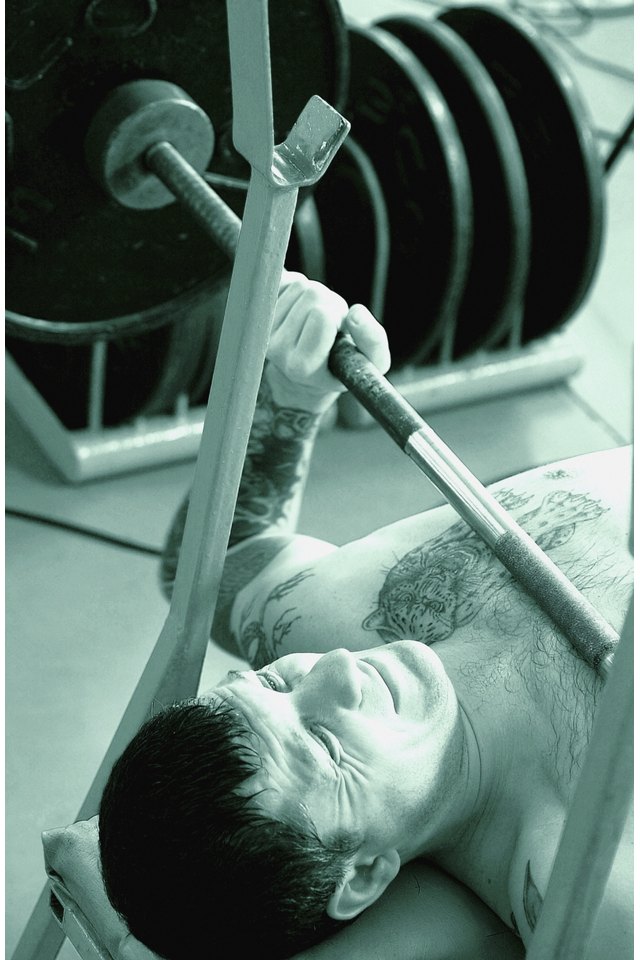What Are the Standard Weights for Powerlifting Bars & Collars?

The barbell is an essential strength-building tool, both for the serious powerlifter training for competition and the beginner performing squats at his local gym. While simple in design, barbells can hold more weight than any other piece of workout equipment -- sometimes up to 1,200 pounds. All barbells and collars aren't created equally, but their weights are standardized and meticulously verified in the competitive world.
Barbell Types
Standard powerlifting barbells weigh 20 kilograms (44.0925 pounds). They are usually 2.2 meters (7.21785 feet) in length, and 28 millimeters (1.10236 inches) in diameter. Powerlifting barbells have grip marks 812.8 millimeters (32 inches). Crosshatched knurling patterns along their length aid the lifter's grip in the deadlift, squat and bench press. Other types of barbells commonly found in powerlifting are junior training bars, which weigh 10 kilograms (22.0462 pounds), and women's bars, which weigh 15 kg (33.0693 pounds).
Collars
Most gyms require the use of lightweight metal collars, which slide over the bar's ends -- called sleeves -- to prevent plates from slipping off during a lift. Despite adding only a few ounces to the barbell's total weight, these collars are quite sturdy and should always be used to stabilize a weighted load. In powerlifting competitions, participants are required to use collars that weigh 2.5 kilograms (5.51156 pounds), which brings the barbell's total weight to 55.11562 pounds before plates are added.
Writer Bio
Alison McConnell is a writer based in Washington, DC. She has more than 13 years of experience covering topics in economics, business, personal finance, fitness, health and nutrition. She has worked as a writer and editor for newspapers, magazines, websites and radio. McConnell holds a BA in economics from Bowdoin College and has worked as a strength and conditioning coach since 2009.
